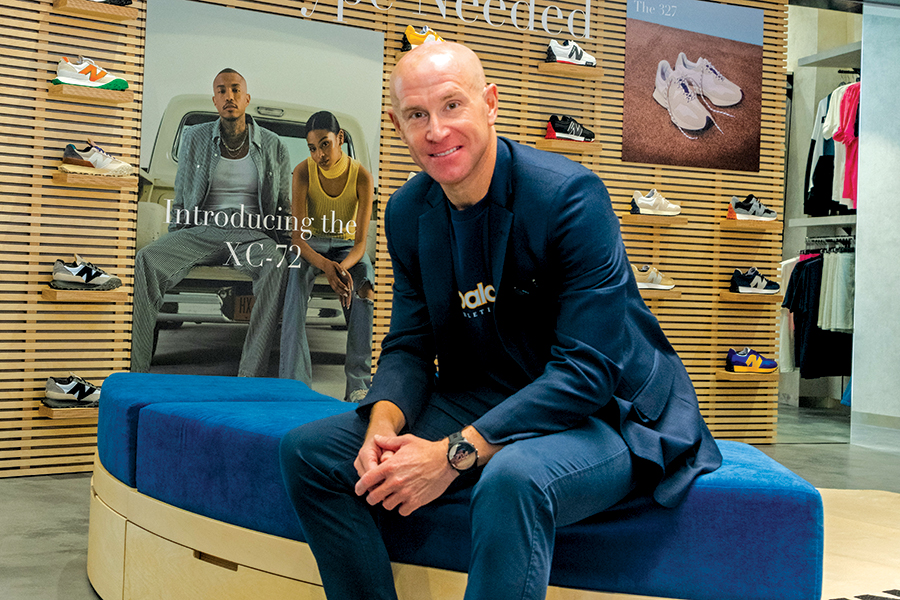
New Balance’s omni-approach to engage, serve and reward customers
The global sporting and athletic goods market grew from $165.28 billion in 2022 to $179.1 billion in 2023 and is expected to touch $238.89 billion in 2027, estimates The Business Research Company.
The sports and athleisure category have, indeed, seen significant growth over the past few years and this growth is projected continue at double-digit until 2026, agreed Stuart Henwood, Regional General Manager, New Balance MENA & India.
Even as health, fitness and sports are becoming a more significant part of people’s lives, headwinds have caused woes for the sector. For example, according to McKinsey & Company in 2022 the Chinese sporting goods market was “largely flat” in stark contrast to “double-digit expansion” over recent years. The US sporting goods market that saw a “strong” post pandemic recovery in 2021 witnessed 4-8% decline in unit sales in the first nine months of 2022, compared to the 2021 levels.
Despite existing headwinds due to continued supply chain disruption and operational challenges, inflationary pressures and geopolitical issues, the global sporting goods industry is still in a “fortunate” position as compared to many other retail segments, McKinsey & Company believes.
“At New Balance we recorded 50% year-on-year growth in the past year, and we expect to witness double-digit growth in 2023,” Henwood shared aligned with expert views that the sporting goods industry will remain resilient despite roadblocks.
Against this background, Henwood spoke about New Balance’s recent business milestones and future growth strategies in an exclusive interview with IMAGES RetailME.
Over the past 12 months, what are some key business milestones for New Balance in the region?
There have been several business milestones for New Balance. We completed full year of trading (at 50%+) at our Dubai Mall flagship store therein delivering extremely strong sales per square foot. In terms of expansion, we had several key store openings in 2022 including The Avenues Kuwait, Riyadh Park and Granada in Saudi Arabia through franchise partnerships. In February 2023 we opened our owned and operated store in Abu Dhabi Mall. There is more exciting news to come as we continue expanding within the UAE, Saudi Arabia and Qatar as well as across Africa with key partners in Morocco and Algeria in our efforts to get closer to communities. What’s more we will also open an office in India later in 2023. In addition, we have continued strengthening our partnerships across the GCC including signing up with one of the leading football clubs in the region AL Sadd SC – a Qatari sports club.
Tell us about New Balance’s channel centric (online & offline) strategy in the region.
We have our own e-commerce channels in the region, coupled with strong partnerships with select key online sports and fashion retailers. As such, we have a balanced approach towards the online-offline channel mix. That’s because post[1]pandemic there has been a clear shift back to the brick-and-mortar retail environment with e-commerce complimenting to offer an omnichannel experience. We are and will continue to take an omni-approach in the way we engage, serve and reward our customers. In the MENA region, especially in the GCC, brick-and-mortar retail is a lifestyle and a crucial part of engaging with consumers. We understand this and that’s why through our mono branded footprint we are keen to build and engage with communities in areas where we operate. Similarly, engaging with consumers digitally is also an integral part of the New Balance journey be it through social media, digital media and e-commerce to drive consistency of product and brand availability.
Technology pieces such as artificial intelligence, augmented reality, virtual reality and now Web3 are being widely leveraged in the retail industry. How is New Balance keeping pace?
I’d like to share an example to showcase what we are doing. In 2022 the brand opened the ‘Track by New Balance’ at our headquarter in Boston, Massachusetts in the US. The state[1]of-the-art facility has a 200-metre hydraulically banked indoor track with football turf pitches, basketball and volleyball courts. In addition, we have one of the leading sports research laboratories utilising the most innovative technologies to enhance our athletes’ performance on and off the field. This is just one example of the innovative, independent approach of the brand to enable athletes and consumers through state-of-the-art digital capabilities. The venue is a true destination.
In terms of digital transformation what will be your three key focus areas over the next two-three years?
We will continue to engage with our regional and global audience through data driven approach and capabilities as we continue to deliver to them innovative products across footwear and apparel categories. In addition, we will continue to invest in creating exciting digital experiences across all platforms to deliver to our consumers an ever-evolving omni brand experience.
Finally, according to you, what are some key trends that will dominate the sports retail sector?
I think comfort, authenticity, sustainability and a consumer centric approach to everything we do are among key trends that will continue to dominate the sports retail sector.